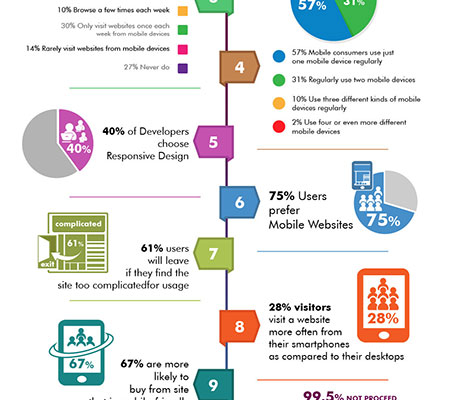The Growth Of Web Design: After That And Now
The Growth Of Web Design: After That And Now
Blog Article
Post Author-Hartley Dalby
In the past, websites were easy and concentrated on information. Navigating was straight, and layout was for desktop computers. Currently, user experience is crucial. Data overviews designs for easy navigation. Responsive layouts suit various devices. Get Source , dark mode reduces pressure, and minimal menus enhance navigation. Interactive functions involve individuals, and bold visuals stick out. AI integration boosts involvement. See exactly how layout has evolved to improve your on-line journey.
Early Days of Website Design
In the early days of web design, simpleness reigned supreme. Websites were standard, with limited shades, fonts, and designs. The emphasis got on providing info as opposed to fancy visuals. Individuals accessed the net via slow dial-up links, so rate and performance were crucial.
Navigating menus were straightforward, typically situated on top or side of the web page. Internet sites were developed for computer, as mobile surfing wasn't yet prevalent. Content was king, and developers prioritized simple readability over complicated layout aspects.
HTML was the key coding language utilized, and developers needed to function within its restraints. Animations and interactive functions were minimal contrasted to today's criteria. Internet sites were fixed, with little dynamic material or customized user experiences.
Increase of User-Focused Design
With the evolution of website design, a shift towards user-focused style principles has actually come to be increasingly popular. Today, creating internet sites that prioritize customer experience is important for engaging site visitors and attaining organization objectives. User-focused layout entails comprehending the demands, choices, and habits of your target audience to tailor the website's design, content, and features as necessary.
Developers currently carry out extensive study, such as customer studies and functionality screening, to collect insights and feedback straight from users. This data-driven approach assists in developing user-friendly navigating, clear calls-to-action, and aesthetically enticing interfaces that resonate with site visitors. By putting the user at the center of the style procedure, sites can provide a much more customized and enjoyable experience.
Receptive design has likewise emerged as a key aspect of user-focused layout, making certain that sites are enhanced for different devices and screen sizes. This versatility enhances access and use, accommodating the diverse methods individuals communicate with websites today. Essentially, the surge of user-focused style represents a shift towards developing electronic experiences that prioritize the requirements and assumptions of completion customer.
Modern Trends in Website Design
Discover the most up to date patterns shaping web design today. One popular fad is dark mode style, supplying a streamlined and modern-day look while lowering eye strain in low-light atmospheres. An additional crucial trend is minimalist navigating, simplifying menus and enhancing user experience by concentrating on essential elements. Integrating micro-interactions, such as animated switches or scrolling effects, can develop an extra appealing and interactive site. Responsive layout continues to be critical, guaranteeing smooth user experiences across different devices. In addition, using vibrant typography and unbalanced formats can add visual rate of interest and draw attention to certain content.
Incorporating AI innovation, like chatbots for consumer assistance or customized recommendations, enhances customer interaction and simplifies processes. Accessibility has likewise come to be a substantial trend, with designers prioritizing comprehensive layout practices to deal with diverse individual needs. Welcoming https://www.seroundtable.com/seo-learned-a-few-tricks-job-32596.html by optimizing site efficiency for speed and performance is one more emerging pattern in website design. Working together with individual feedback and information analytics to iterate and enhance design continually is crucial for staying relevant in the ever-evolving digital landscape. By embracing these contemporary fads, you can create an aesthetically enticing, user-friendly web site that reverberates with your target market.
Verdict
As you review the development of site layout from the early days to currently, you can see how user-focused style has ended up being the driving pressure behind modern patterns.
Embrace the trip of modification and adaptation in website design, always maintaining the individual experience at the forefront.
Keep present with the current trends and innovations, and never ever quit progressing your approach to develop aesthetically magnificent and user-friendly web sites.
Evolve, adjust, and develop - the future of website design remains in your hands.
